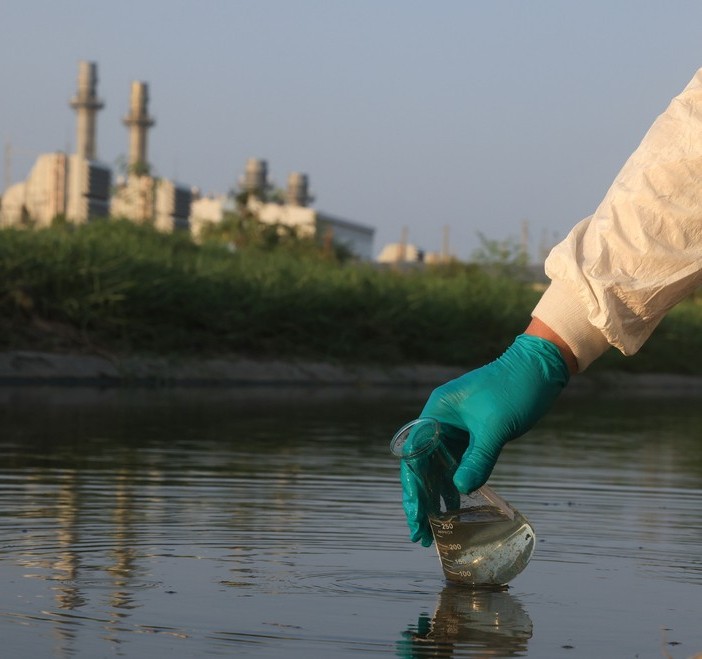Research and Development for Water and Wastewater Treatment
Our Approach
At Amriton, we conduct comprehensive R&D to help our clients determine the most effective and sustainable treatment solutions. Our testing capabilities span from laboratory-scale studies to pilot-scale tests, providing important design data basis for full-scale treatment systems. Through R&D we determine the best combination of processes to achieve cost effective solutions for complex waste streams.

Our Expertise Includes:
Wastewater Analysis
We have expertise and extensive experience in the analysis of complex, industrial wastewater, such as pharmaceutical process wastewater and sludge.
Adsorption Batch and Column Tests
We perform small-scale adsorption column tests to simulate large-scale treatment processes. By using a variety of porous adsorbents—including Granular Activated Carbon (GAC), resins, and regenerable polymeric adsorbents—we optimize the adsorption process for removing contaminants such as organic compounds and other pollutants from water.
Ion Exchange (IX) Column Tests
Ion Exchange is a physical-chemical process where undesirable ions in the water are replaced by more benign ions, effectively removing contaminants. Our IX column tests utilize specialized resins for targeted treatment of water in industrial, municipal, and wastewater applications, ensuring the effective removal of ionic pollutants including both organic and inorganic contaminants.
Advanced Oxidation Processes (AOPs)
AOPs accelerate the breakdown of persistent contaminants based on the production of highly reactive oxidation agents, such as hydroxyl radicals (HO·). These methods are particularly effective for treating toxic compounds that are resistant to conventional treatment. We have expertise in several AOP technologies tailored to various treatment needs:
- Ozone-based AOPs (e.g., Ozone, Ozone/Peroxide): Widely used for water treatment, ozone offers powerful disinfection and oxidation properties, breaking down complex pollutants. We have developed ozone-based solutions for a number of pharmaceutical clients and methods to prevent harmful byproducts like bromates.
- UV-based AOPs (e.g., UV/Peroxide, UV/Ozone): UV light activates oxidative reactions to degrade organic pollutants, making it a highly effective method in both water purification and wastewater treatment. This approach is particularly efficient for degrading pharmaceutical compounds, which can be effectively broken down by UV light.
- Fenton Reagent: Utilizes iron-based catalysts to generate hydroxyl radicals, ideal for treating industrial wastewater with high levels of organic pollutants.
Biological Oxidation
Biological oxidation uses natural microorganisms to break down organic compounds in wastewater, offering a cost-effective and sustainable treatment solution. This process is ideal for wastewater with high organic load, where microbes degrade pollutants into harmless byproducts like water and carbon dioxide. Our expertise spans various systems, including aerobic and anaerobic treatments, AS, MBR, MBBR, and SBR, ensuring tailored solutions to meet diverse treatment needs.
Membrane Bioreactor (MBR) & Moving Bed Biofilm Reactor (MBBR) Tests
These advanced filtration methods combine biological treatment with membrane filtration to remove particles, colloids, and macromolecules from water. MBR systems are particularly effective in municipal and industrial wastewater treatment where space is limited or higher-quality effluent is required. MBBR systems, on the other hand, offer a compact and efficient alternative for treating both municipal and industrial wastewater with high organic loads and complex contaminants.
Dissolved Air Flotation (DAF)
DAF is a robust water treatment process that clarifies wastewater by removing suspended solids and oils. In this process, air is dissolved under pressure and released in the flotation tank, forming bubbles that attach to suspended matter, causing it to float to the surface where it is removed. DAF is widely used in industrial and municipal water treatment for solid-liquid separation.
Electrocatalysis
Electrocatalysis involves catalysts that accelerate electrochemical reactions, improving the efficiency of water treatment processes. By enhancing the rate of reaction at electrode surfaces, electrocatalysts are used in a variety of applications, including advanced oxidation, electrocoagulation, and electrochemical degradation of pollutants, ensuring high-performance water treatment. We have developed a flow-through electrocatalytic reactor for efficient degradation of PFAS in water.
Ultrasound Technology
Our ultrasound technology effectively decomposes complex organic compounds and breaks down recalcitrant pollutants into simpler, more biodegradable substances. This method is particularly useful for treating wastewater with persistent chemical contaminants, offering a sustainable solution without the use of harsh chemicals. We have performed R&D on treatment of water and soil and provided recommendations to SERDP/DoD.
Soil Column Tests
Our soil column tests simulate the behavior of contaminants, such as pharmaceutical compounds, ARGs, and emerging pollutants, in soil environments. By assessing the transport, accumulation, and degradation of these substances, we provide insights into their environmental fate, helping clients understand their potential impact on soil and groundwater.
Sensors
R&D efforts also include the development of sensors to detect various metals, such as gold, and for metal purity assessments.
